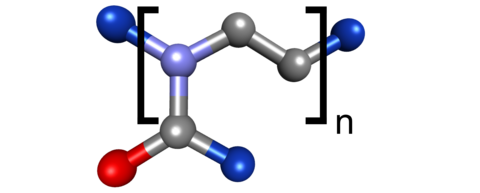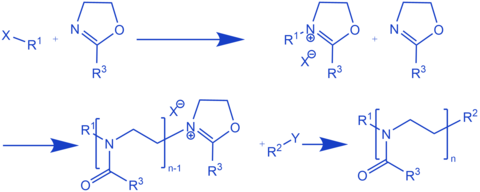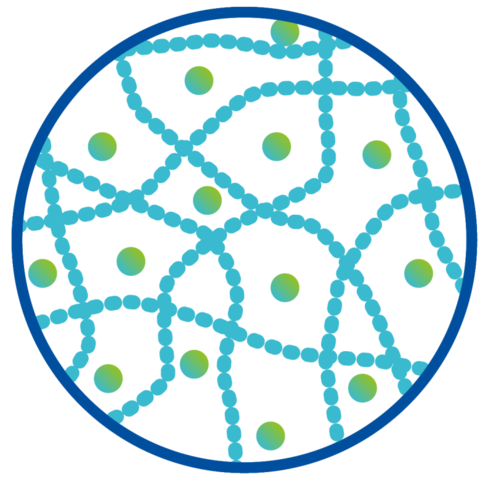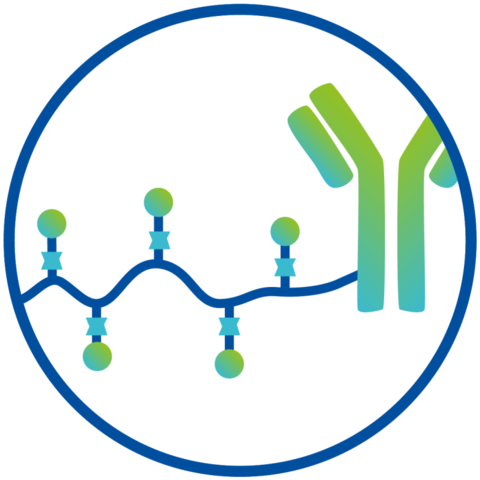In recent years, polymers have increasingly found their way into the field of drug formulation. A versatile platform is provided by polyoxazolines, which are adaptable and thus suitable for a wide range of applications. However, in the medical field, these polymers must meet pharmaceutical-grade standards. ChemCon is capable of producing custom polyoxazolines under GMP conditions. Some applications of the polymers we produce include:
- Targeted drug delivery
- Long-term drug release
- Smart nanoparticles
POx at Chemcon
For many years, polymer chemistry has been a field in which ChemCon has gained extensive experience. Our polymer chemists are experts in their field and can work with you to synthesize a polymer according to your specifications. Particularly in the area of polyoxazolines and polyethyleneimines, we are one of the few companies capable of conducting syntheses under GMP conditions. This makes our polymers suitable for pharmaceutical applications. The high level of customizability allows the product to be tailored to your specific application. One of the advantages of working with ChemCon is the continuous collaboration from the development phase to GMP synthesis. We are the right partner for your project because:
We love Chemistry!
Individualization
Various residual groups make Polyoxazolines extremely flexible. We realize the right residual group for your application.
We can also adjust chain length, molecular weight distribution, degree of substitution, end groups and more.
Synthesis
Cationic ring-opening polymerization is used to synthesize the polymer starting from a 2-alkyl-2-oxazoline monomer. The reaction is initiated by alkylation with, for example, alkyl tosylates or triflates (X). Another oxazoline then nucleophilically attacks the alkylated oxazoline, leading to ring-opening at the C-O bond, causing isomerization. This process continues the polymer chain. Tosylate acts as the counterion. The polymer grows until the addition of a nucleophilic termination reagent, such as secondary amines, water, or primary alcohols (Y). By varying the alkylation reagent, termination reagent, and the alkyl groups on the monomer, the polymer’s various properties can be precisely controlled.
Applications
Medications formulated with polyoxazolines can maintain controlled drug release over an extended period. The polymer allows for a higher drug dose per administered unit. Due to the properties of the polymer, it is possible to release the higher drug amount over a longer period in a controlled manner. The high customizability allows for adjustment of the polymer's water solubility and other properties to suit the specific application.
The binding of a drug or protein to POx has positive effects on the performance of the medication. The proteins retain up to 90% of their activity despite binding to the polymer. Additionally, cellular uptake can be increased up to six times, and the duration of action of the drug can be up to four times longer. These benefits are enabled by the various properties that can be imparted to the polymer. Size, water solubility, and thermal stability are properties that can be modified in the polymer. This also helps prevent uptake by non-target cells or organs.
Polyoxazolines can be conjugated with nanoparticles. These nanoparticles are capable of combining multiple functional groups as well as various optical, electrical, thermal, and magnetic properties. The polymers attached to the nanoparticles prevent rapid degradation and provide a framework for other compounds. With the thermoresponsive properties of POx, smart nanoparticles can be formed that can be triggered by external stimuli.
Downloads
More Information

Company brochure








